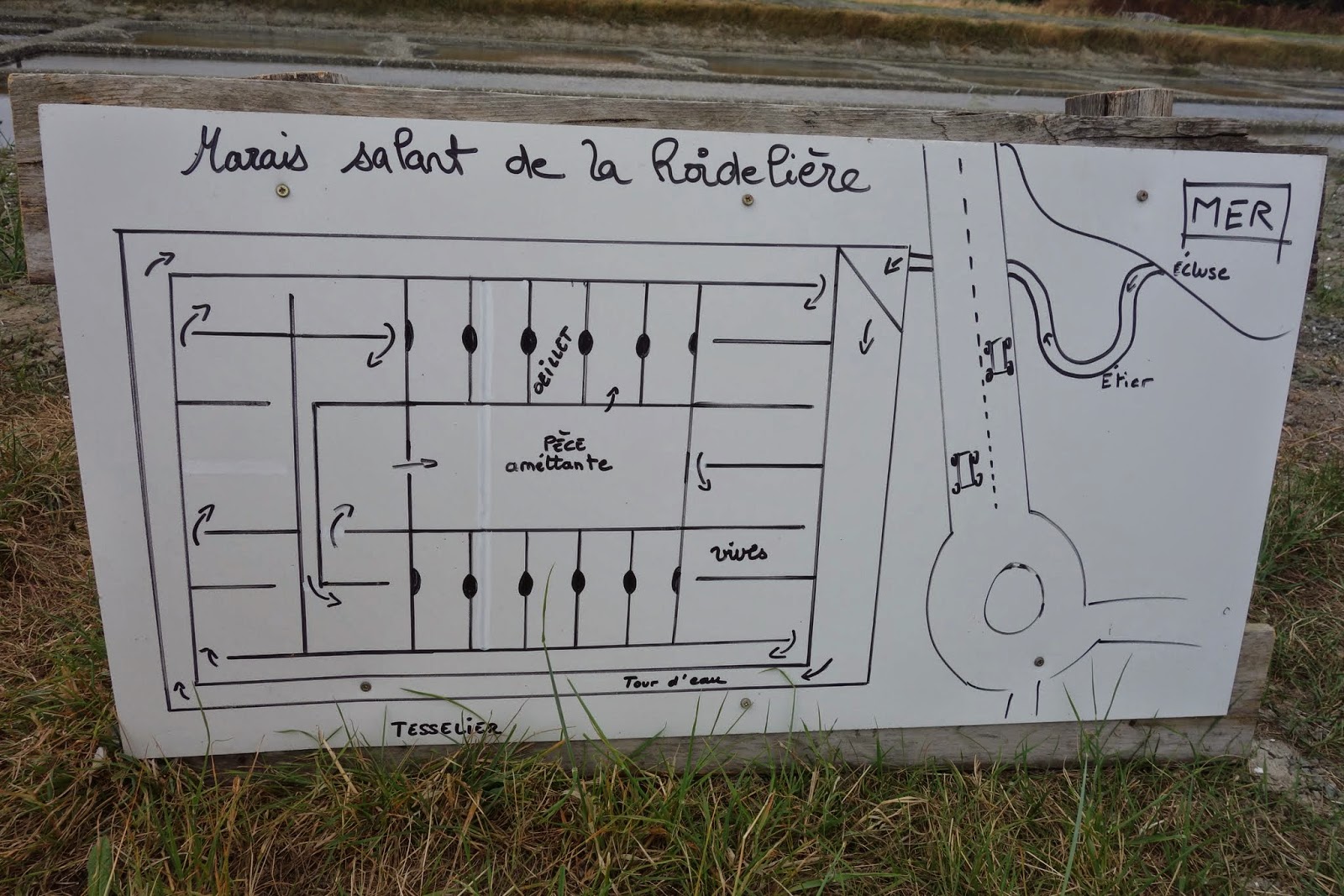 |
| Our special retreat - our room is centre background, one shutter half open |
After the necessities of Day 1, (washing done, lunch eaten, an afternoon sleep, a short bike ride to check out the nearest campsite - deemed not very attractive and overpriced), we were ready on day 2 to push ourselves further, and do the obligatory tour of the island on some of the 60+km of cycle paths or lanes. Again, much of this island (two-thirds, one source says) is below sea level, ideal for the traditional harvest of salt for a small but popular market. Our first stop was a museum about the traditional way of life here, and we were particularly impressed by the video of the salt harvest and management. So impressed that Babette, the lady in the museum, sent us to talk to Philippe, who makes his living this way. We did that on the way back. And called in to see Babette. She had had two more NZers passing by that afternoon!!

In Noirmoutier-en-Ile ( a place) there is a castle, dating from medieval days. We didn’t feel we had time to go in, but I probably would on a subsequent visit. The original keep is 12th century. The port where the castle stands traditionally housed the rich salt traders (18th century) and the fisherman and artisans who supported the community.

Further round the coast, and at a later time, (early 19th century), mansions and chalets for the rich sprang up around the beach area in Le Bois de la Chaise as sea-bathing became a popular holiday pastime. Trains allowed people to get as far as Pornic and boats would take them to the jetty (still there) at La Plage des Dames. So there were two entirely different societies, living within a couple of kilometres of each other, in the port and in the 'forest'. I had been to the Plage des Dames in 2007 with the Soulard family and we celebrated my return with a very delicious caramel crêpe!
Back onto the bikes and around the north coast - beach after beach. Had our togs but not tempted. Water was freezing. We paddled. Slightly.
 |
| The jetty at la Plage des Dames |
 |
| And panning to the right... |
On our way back we managed to stop by to see Philippe, he of salt fame. The museum display was very good and had shown us the techniques used and some of the history. The Benedictine monks first started this process here in the seventh century and in the 19th century huge drainage projects, were carried out, completing the works. Between the thirteenth and ninetieth centuries salt was the island’s source of wealth. Philippe put the personal stamp onto it, showing us exactly how he extracted the salt which he sells from the stall on his property. All the salt pans are below sea-level and have a clay bottom through which water cannot penetrate, upwards or downwards. Briefly, water comes in from the sea with 30g of salt per litre, stays in a sort of shallow holding tank where some of the water evaporates, until there is 40g per litre. This water is then let into a sort of one-way shallow maze, where it continues to evaporate as it makes its way into the (shallow) salt pans (oeillets) from where it is harvested. The water has to evaporate until there is about 230g per litre. The recent rain has knocked back Philippe’s harvest and he needs sun! June, July and August are the only suitable months to harvest and he needs to renew the water supply every fortnight if he is to harvest enough over the season. The salt pans are very geometric and there are flat spots onto which the salt is raked up and loaded onto a wheelbarrow, to be emptied into large heap on dry land. In the mid-19th century there were 30,000 salt pans on the island. Today only 3000 are in use. Industrial methods have taken over but the mineral salts and trace elements of the traditionally harvested Noirmoutier salt remain, and it is sought after by fine restaurants.













No comments:
Post a Comment